Name Arnulfo Arias Role Politician | Preceded by Roberto F. Chiari Party Panamenista Party Siblings Harmodio Arias Madrid | |
 | ||
Preceded by Marco Aurelio Robles Mendez Succeeded by Jose Maria Pinilla Fabrega Similar People Harmodio Arias Madrid, Mireya Moscoso, Guillermo Endara, Juan Carlos Varela | ||
Succeeded by Ernesto Jaen Guardia Succeeded by Alcibiades Arosemena | ||
Panama city scenes arnulfo arias madrid monument balboa by bk bazhe com
Arnulfo Arias Madrid (15 August 1901 – 10 August 1988) was a Panamanian politician, doctor, writer, and President of Panama on three occasions: 1940-41, 1949–51, and for 11 days in October 1968.
Contents
- Panama city scenes arnulfo arias madrid monument balboa by bk bazhe com
- Arnulfo arias en la tv francesa
- Background
- Political life
- Death
- Personal life
- References
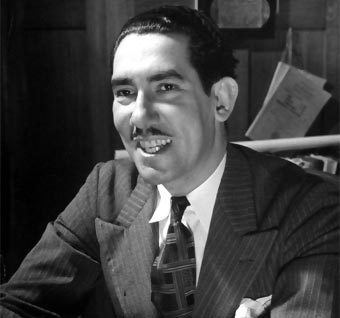
Arnulfo arias en la tv francesa
Background
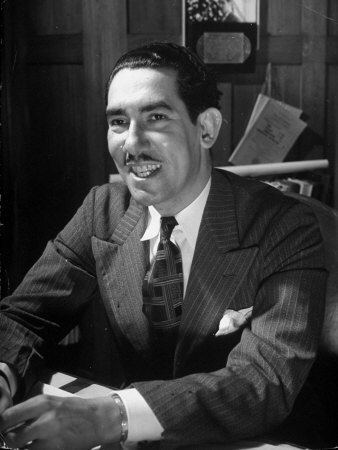
Arnulfo Arias was born in Penonomé, Coclé Province, the son of Antonio Arias and Carmen Madrid, and the brother of Harmodio Arias, who served as the President of Panama in two occasions: for 13 days in January 1931, and from 1932-36.
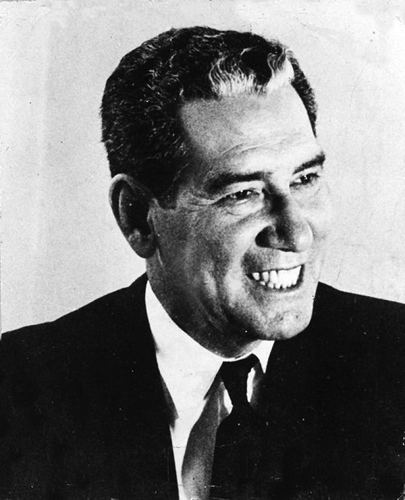
Arnulfo Arias began his studies at the French Christian Brothership (today known as La Salle) in his native city and attended secondary school in New York City. He studied medicine and surgery at Harvard University and the University of Chicago. Later, he specialized in psychiatry, obstetrics and endocrinology.
Political life
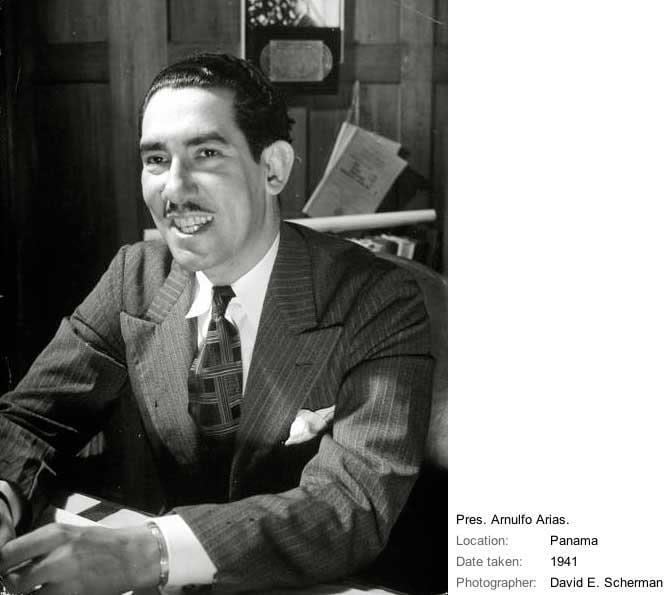
In 1925, Arias returned to Panama and assumed leadership of the nationalistic organization Patriotic Communal Action. This organization tapped into a building current of discontent in Panama against the considerable influence the United States exerted on the country. It formed the nucleus of the present-day Panameñista Party. Panama had been, for all intents and purposes, a U.S. protectorate since gaining independence in 1903.
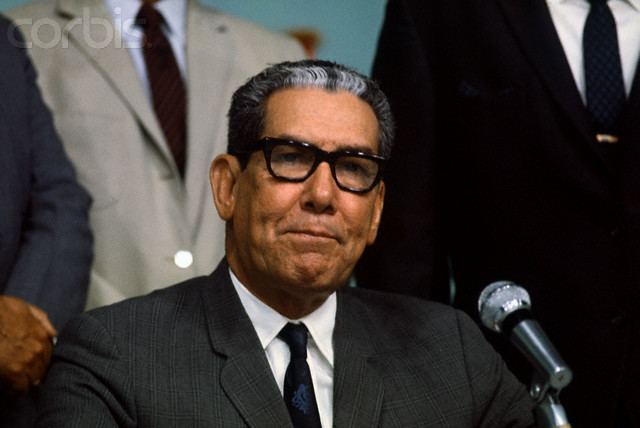
In 1931, Arias led a coup that deposed Liberal President Florencio Harmodio Arosemena. The next year, he helped his brother Harmodio become president. He subsequently served in cabinet and diplomatic posts. A staunch supporter of German leader Adolf Hitler, Arnulfo Arias and his brother vowed to weaken United States influence in Panama and make the nation closer to Nazi-run Germany.
In 1940, he was elected president by an unprecedented majority as the candidate of the National Revolutionary Party (PNR, which became the Panameñista Party in the mid-1940s). Soon after taking office, Arias enacted a new constitution that granted women the right to vote for the first time. He declared in his inaugural address "As Panama has ceded its territory to the United States to construct the Canal, Panama also can cede territory to the Germany of Adolf Hitler so they can construct here what they wish and can help us against Imperialism." He was ousted in October 1941, in a coup supported by the United States.
He ran for president again in 1948 as the candidate of a coalition of his party and the Authentic Revolutionary Party and lost. However, a year later the National Assembly declared that he had actually won. He suspended the constitution and set up a secret police force. Corruption was widespread, and he was overthrown again in 1951. He ran unsuccessfully in 1964, then won the 1968 elections as the standard-bearer of a five-party coalition.
Taking office in October, he maneuvered to gain control of the legislature and the Supreme Court and to restructure the command of the National Guard. After only 11 days as president, he was ousted for the third time and undertook a midnight escape to the Canal Zone. Repeating mistakes which occurred in his previous administrations, Arias forgot to destroy records of his corruption and his opposition immediately capitalized. The Presidential Palace was shot up by Omar Torrijos' men. Arias, having seen the Guards gone and after receiving a call from the Costa Rican President José Joaquín Trejos Fernández, warning him that the border had been closed; he left the Palace along with Hildebrando Nicosia, his Chief of Staff.
Nicosia called Michael J. Merry, his son-in-law and manager of a U.S. communications company, and asked him to pick up Arias and three Ministers of State at a pre-arranged location. By that time, military patrols were searching the city for Arias. With the country's leaders and an arsenal of automatic weapons in his vehicle, Merry drove through the military blockade to safety in the Panama Canal Zone, where the headquarters for the government in exile had been prepared.
Since the Canal Zone authorities would not allow the weapons to remain in its territory, Merry was forced to bluff his way back to Panama City, through the National Guard border blockade and patrols to safety. Arias and Nicosia later left the Canal Zone to Miami, Florida. His 93-year-old mother, however, was sleeping upstairs, but was unharmed and undisturbed, having taken her hearing aids out to sleep.
After the U.S. pressured military leader Omar Torrijos to liberalize his regime, Arias and Nicosia returned to Panama in 1978. While they were in exile, a small dissident group in Arias's Panameñista Party joined the pro-Torrijos coalition, and took over the party's registration. The majority of the party remained with Arias, renaming itself the Authentic Panameñista Party. It was renamed the Arnulfista Party in 1990, and in 2005 regained its old name, the Panameñista Party.
In 1984, the 83-year-old Arias ran again for president. When exit polls showed Arias with a substantial lead, the government, now controlled by Manuel Noriega, halted the count and brazenly manipulated the results to declare that its candidate, Nicolás Ardito Barletta, had won by only 1,713 votes. Independent observers estimated that Arias would have won in a landslide had the election been conducted in a fair manner. As a result, Barletta was nicknamed fraudito (little fraud), which rhymes with his surname, Ardito. Arias fled once again to Florida.
Death
On the morning of 10 August 1988 and while watching television at his Coral Gables, Miami home, Arnulfo died due to natural causes. His wife, Mireya Moscoso was at his side. His death caused national mourning around Panama. Following the transfer of his body to Panama City and a large funeral where his supporters protested against Noriega, he was buried in Jardin de Paz cemetery (Located in Parque Lefevre) on the day of what would have been his 87th birthday.
After his death, Guillermo Endara became the leading opponent of the military dictatorship, heading the opposition coalition in the 1989 presidential election. Despite defeating pro-Noriega candidate Carlos Duque by a overwhelming margin, the results were annulled by the government, and Endara and his running mates were badly beaten in the streets by the paramilitary Dignity Battalions. Seven months later, the United States launched Operation Just Cause and Arias' party regained power shortly afterwards.
On 8 January 2012, 23 years after his death and in order to fulfill his last wish, his remains were exhumed and he was given a state funeral. He was re-buried in a mausoleum close to the Arias Madrid Family Museum, located in the town of Penonomé, Coclé Province, Panama. Currently, there are monuments, schools, and a township avenue bearing his name.
Personal life
Arias married to Ana Matilde Linares in 1927 and remained together until her death in 1955. In 1964, he married Mireya Moscoso. They remained together until his death. Moscoso later became the first woman President of Panama following the 1999 elections.
During his first marriage, he adopted a son named Gerardo Edilberto Arias (1929-2002).
